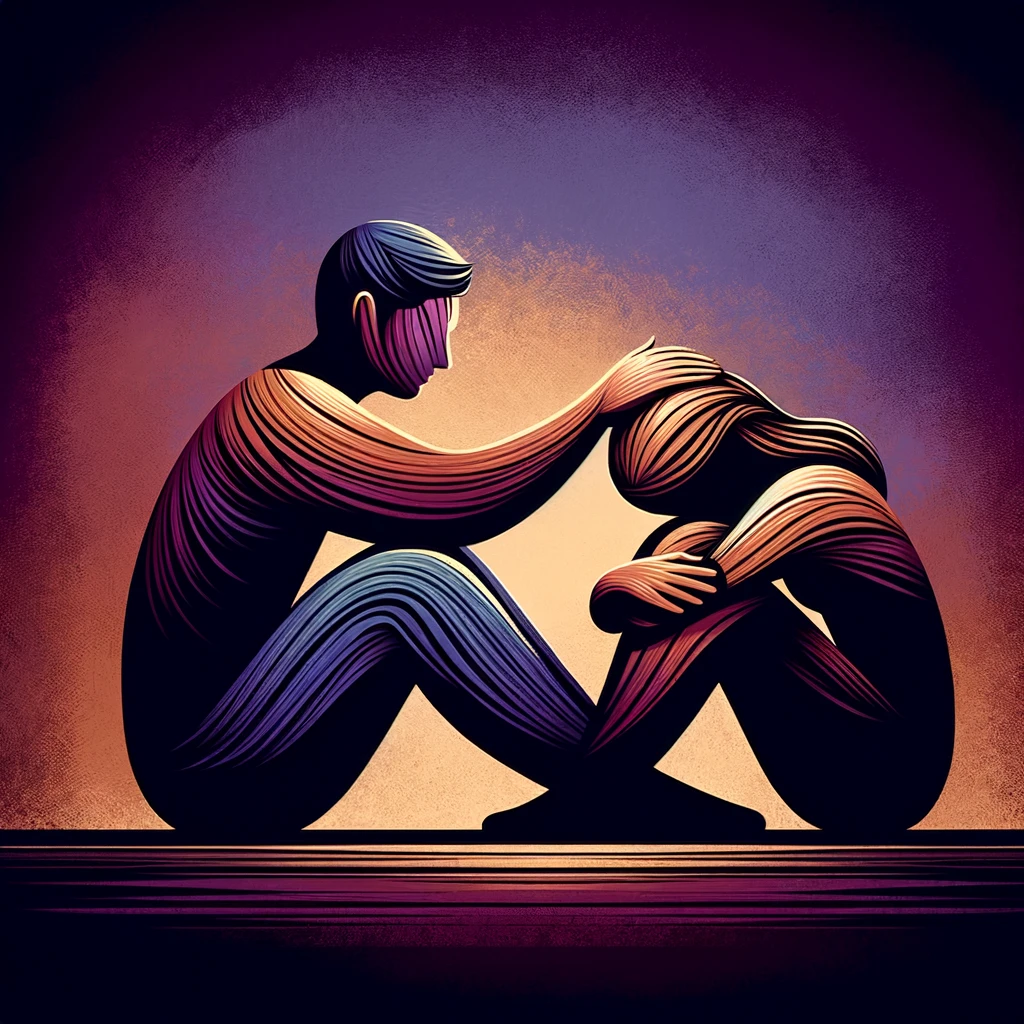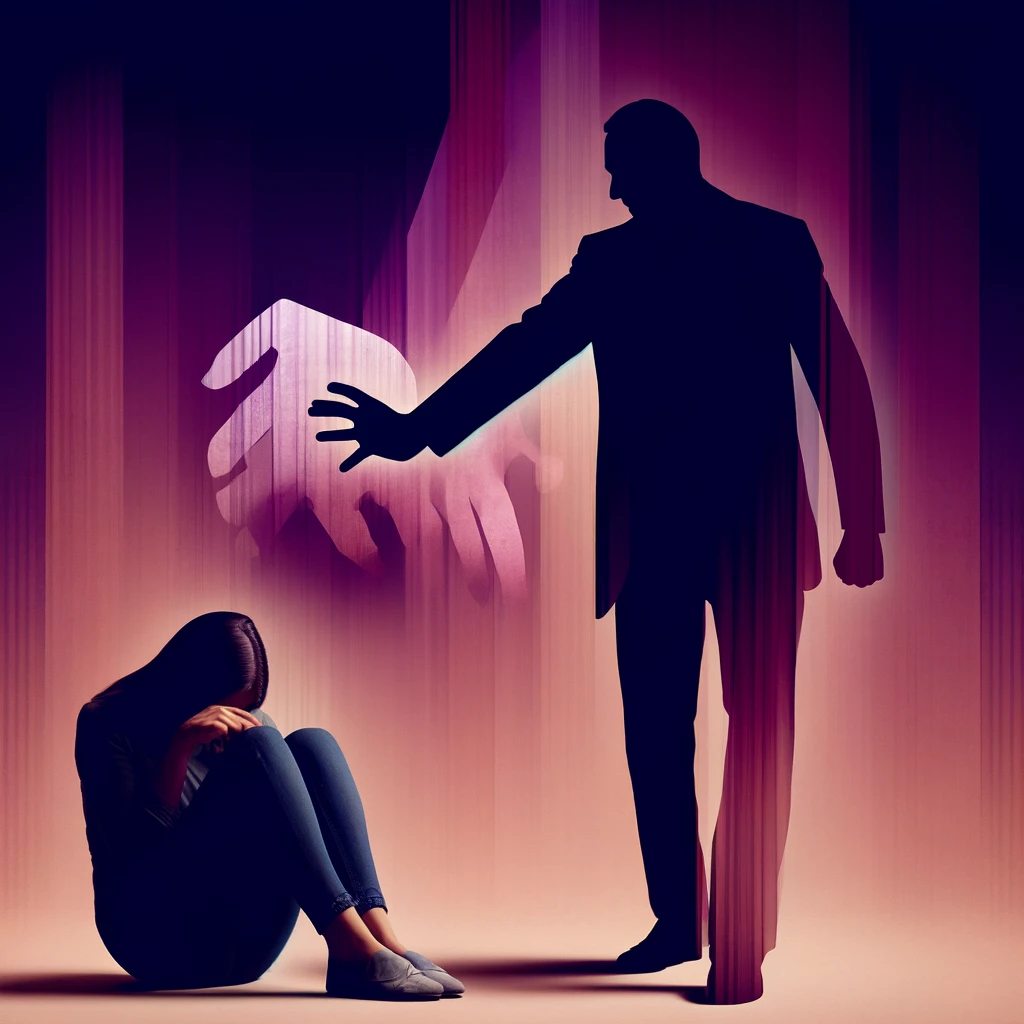Written by Melissa Cutts


According to the National Intimate Partner and Sexual Violence Survey (NISVS) conducted by the Centers for Disease Control and Prevention (CDC), nearly 48% of women and 48% of men in the United States have experienced at least one form of psychological aggression by an intimate partner in their lifetime. Studies suggest that a significant portion of the population may experience emotional abuse in their relationships. Recognizing signs of emotional abuse are crucial for your well-being.
Here are some common indicators:
- Constant Criticism: Feeling like you can’t do anything right, always criticized for your actions, appearance, or decisions.
- Isolation: Your partner tries to control who you spend time with, isolating you from friends, family, or support networks.
- Control: They exert control over various aspects of your life, such as finances, activities, or whom you can talk to.
- Emotional Withholding: They withhold affection, emotional support, or communication as a form of punishment or control.
- Blame-Shifting: They consistently blame you for their own behavior or emotions, refusing to take responsibility for their actions.
- Threats: They threaten you with harm, abandonment, or other consequences if you don’t comply with their demands.
- Constant Tension: Feeling like you’re always walking on eggshells, afraid of saying or doing something that will upset your partner.


Manipulation: They use manipulation tactics like guilt-tripping, gaslighting (making you doubt your own feelings or perceptions) or playing mind games. Mind games in relationships typically involve manipulative behaviors aimed at controlling or confusing the other person.
Here are some examples:
- Gaslighting: This involves denying or distorting facts, events, or the other person’s perceptions to make them doubt their own reality. For example, saying “That never happened, you’re imagining things” when the person knows something did occur.
- Silent Treatment: Withholding communication or affection as a form of punishment or manipulation, often to make the other person feel guilty or anxious.
- Playing the Victim: Manipulating situations to portray oneself as the victim and garner sympathy or avoid accountability. This can involve exaggerating minor issues or blaming the other person for problems.
- Triangulation: Bringing a third party into the relationship dynamics to create jealousy, insecurity, or competition. This might involve comparing the other person unfavorably to someone else or seeking attention from others to provoke a reaction.
- Emotional Blackmail: Using threats, ultimatums, or guilt-tripping to manipulate the other person into doing what the manipulator wants. For example, “If you loved me, you would do this for me.”
- Mixed Signals: Sending contradictory messages or giving unclear responses to keep the other person off balance and unsure of where they stand.
- Projecting Insecurities: Accusing the other person of behavior or feelings the manipulator is experiencing themselves. This deflects attention away from their own issues and places blame on the other person.
- Love Bombing: Showering the other person with excessive affection, attention, or gifts in the early stages of a relationship to manipulate them into feeling dependent or indebted.
- Undermining Confidence: Criticizing or belittling the other person’s abilities, opinions, or achievements to erode their self-esteem and maintain control.
- Hoovering: After a period of manipulation or abuse, the manipulator may attempt to “hoover” the other person back into the relationship by offering false promises of change or apologies, only to revert to previous behaviors once the person returns.


If you recognize these signs in your relationship, it’s important to seek support from trusted friends, family, or professionals. You deserve to be in a healthy and respectful relationship. If you find yourself in an emotionally abusive relationship, here are steps you can take:
- Recognize the Abuse: Acknowledge that the behavior is not acceptable and that you deserve better.
- Seek Support: Reach out to trusted friends, family members, or a therapist who can provide emotional support and guidance.
- Set Boundaries: Clearly communicate your boundaries to your partner and assertively enforce them.
- Consider Your Safety: If you feel physically threatened or fear for your safety, make a safety plan and consider seeking help from local authorities or a domestic violence hotline.
- Educate Yourself: Learn more about emotional abuse, its effects, and healthy relationships. Knowledge is empowering.
- Focus on Self-Care: Prioritize your well-being by engaging in activities that make you feel good and practicing self-compassion.
- Consider Counseling: Couples counseling may help if your partner is willing to address the issues and work towards positive change. Individual therapy can also be beneficial for processing your experiences and building resilience.
- Create an Exit Plan: If you decide to leave the relationship, develop a plan that ensures your safety and includes practical considerations like housing, finances, and legal considerations.
Approaching someone you love about their emotionally abusive behavior can be challenging, but it’s important to address it in a compassionate and respectful manner. Here are some steps you can take:
- Choose the Right Time and Place: Find a time when both of you are calm and free from distractions. Choose a private setting where you can have an open and honest conversation without interruptions.
- Use “I” Statements: Focus on expressing your own feelings and observations using “I” statements, rather than placing blame or accusing the other person. For example, say, “I feel hurt when you criticize me constantly,” instead of “You always criticize me.”
- Be Specific: Provide specific examples of the behavior that concerns you, but avoid making sweeping generalizations. Stick to the facts and avoid exaggerating or minimizing the situation.
- Express Concern: Let the person know that you care about them and are speaking up because you’re concerned for their well-being and the health of your relationship.
- Offer Support: Reassure the person that you’re there to support them and help them work through any underlying issues contributing to their behavior. Offer to seek counseling together or individually.
- Listen Actively: Give the person an opportunity to share their perspective and feelings without interruption. Practice active listening by empathizing with their emotions and validating their experiences.
- Set Boundaries: Clearly communicate your boundaries and what behavior is unacceptable to you. Let the person know that you’re committed to maintaining a healthy relationship but that certain behaviors need to change.
- Give Time and Space: Understand that change takes time, and the person may need time to process your feedback and make changes. Respect their pace and give them space to reflect on the conversation.
- Seek Outside Help: If the person is unwilling to acknowledge or address their behavior, or if the situation escalates, consider seeking support from a therapist, counselor, or mediator who can help facilitate communication and provide guidance.
Approaching someone about their emotionally abusive behavior requires empathy, patience, and courage. Remember to take care of yourself throughout the process and prioritize your own well-being. It is important also to know when to walk away from an abusive person or situation.


When emotional abuse escalates to physical abuse, several signs and patterns often become evident. This transition is marked by an intensification of control and aggression from the abuser, leading to a more dangerous and physically harmful environment for the victim.


Here are some key indicators:
- Escalation of Threats: The abuser may begin to make more explicit threats of physical harm, using intimidation tactics to instill fear. This can include threats of hitting, slapping, or using weapons.
- Increased Isolation: The abuser may intensify efforts to isolate the victim from friends, family, and support networks, making it harder for the victim to seek help or escape the abusive situation.
- Physical Intimidation: Even before actual physical violence occurs, the abuser may start using physical intimidation. This can include aggressive posturing, invading personal space, blocking exits, or physically restraining the victim.
- Destruction of Property: The abuser might start breaking objects or destroying property as a way to exert control and demonstrate their capacity for violence. This behavior serves as a warning of potential physical harm to the victim.
- Initial Acts of Violence: The physical abuse often starts with seemingly minor acts, such as pushing, shoving, or grabbing. These actions can quickly escalate to more severe forms of violence, including hitting, punching, kicking, or choking.
- Cycle of Abuse: The abuser may follow a cyclical pattern where physical violence is followed by periods of remorse or attempts to make amends, only for the cycle to repeat. This pattern keeps the victim off balance and can create a sense of hope that the abuse will stop, making it harder to leave.
- Physical Signs: Bruises, cuts, broken bones, and other injuries that are often hidden or explained away as accidents. The victim might wear long sleeves or sunglasses to cover marks and avoid questions.
- Psychological Impact: Victims may show signs of severe emotional distress, including anxiety, depression, and post-traumatic stress disorder (PTSD). They might become increasingly withdrawn, fearful, and hyper-vigilant.
Recognizing these signs is crucial for intervening and providing support to those experiencing abuse. If you or someone you know is in an abusive situation, it is important to seek help from professionals, such as domestic violence hotlines, shelters, or law enforcement agencies.
Therapy can be a life saver for someone who has experienced an abusive relationship. It is important to take time to heal from abusive relationships not only for yourself and your future partner, but for your own mental health. It is safe to trust people again while also knowing how to ask for the things you need.
Here are some ways therapists can help:
- Validation and Empowerment: Therapists provide a safe and nonjudgmental space for individuals to share their experiences and feelings. They validate the person’s emotions and experiences, helping them understand that they are not alone and that their feelings are valid.
- Education and Awareness: Therapists help individuals understand the dynamics of emotional abuse, including how it manifests, its effects on mental health and well-being, and the cycle of abuse. This education can empower individuals to recognize abusive behaviors and take steps to protect themselves.
- Safety Planning: Therapists assist individuals in developing safety plans to protect themselves from harm in emotionally abusive situations. This may involve identifying safe places to go, creating a support network, and establishing boundaries with the abuser.
- Building Self-Esteem: Emotional abuse can erode self-esteem and self-worth. Therapists work with individuals to rebuild their self-esteem, cultivate self-compassion, and recognize their inherent value and strengths.
- Coping Strategies: Therapists teach coping strategies and techniques to help individuals manage the emotional distress caused by the abuse. This may include relaxation techniques, mindfulness practices, and stress management skills.
- Setting Boundaries: Therapists assist individuals in setting healthy boundaries with the abuser and assertively communicating their needs and limits. This empowers individuals to protect themselves and maintain their autonomy.
- Exploring Options: Therapists help individuals explore their options and make informed decisions about their relationships. This may involve discussing the possibility of leaving the abusive relationship, seeking legal protection, or accessing support services.
- Supporting Recovery: Therapists support individuals in their journey of healing and recovery from the effects of emotional abuse. This may involve processing trauma, addressing any co-occurring mental health issues, and rebuilding a sense of trust and safety.
Overall, therapists provide compassionate and individualized support to help individuals navigate emotionally abusive situations, regain control of their lives, and work towards healing and empowerment.


Recognizing what a healthy relationship can be helpful in creating a common goal between you and your partner. In a healthy relationship, both partners feel respected, valued, and supported.
Here are some key characteristics:
- Communication: Open, honest communication is central to a healthy relationship. Both partners feel comfortable expressing their thoughts, feelings, and needs, and they listen attentively to each other.
- Mutual Respect: Each partner respects the other’s boundaries, opinions, and autonomy. There is no belittling, criticizing, or demeaning behavior.
- Trust: Trust forms the foundation of a healthy relationship. Both partners trust each other’s intentions and actions, and they feel secure in the relationship.
- Equality: Partners view each other as equals and make decisions together. Power and control are shared, and neither partner dominates or manipulates the other.
- Supportive Environment: Each partner supports the other’s goals, aspirations, and personal growth. They celebrate each other’s successes and provide comfort during challenges.
- Healthy Conflict Resolution: Disagreements are inevitable, but in a healthy relationship, conflicts are resolved respectfully and constructively. Both partners listen to each other’s perspectives, compromise when necessary, and work towards finding mutually beneficial solutions.
- Emotional Intimacy: Emotional connection and intimacy are nurtured through affection, empathy, and vulnerability. Partners feel emotionally safe with each other and can share their deepest thoughts and feelings.
- Independence and Interdependence: While each partner maintains their individuality and independence, they also recognize the importance of their connection and actively contribute to the relationship’s growth and well-being.
- Fun and Enjoyment: Healthy relationships include moments of joy, laughter, and shared experiences. Partners enjoy spending time together and prioritize making each other happy.
- Continuous Growth: Healthy relationships evolve over time as partners learn and grow together. They adapt to changes, support each other’s personal development, and continually invest in strengthening their bond.
You deserve to be in a healthy relationship where you feel respected and cherished by your partner. You are allowed to speak up for the things you need to thrive. Feeling safe is a necessity for everyone in their personal relationships and being able to see the signs that something is wrong can be lifesaving as emotional abuse can have the potential at any time to become physical. If you feel threatened by your partner, seek out help from a therapist of someone you trust. You are stronger than you think and help is available. Do not allow an abusive relationship to trap you or make you feel hopeless.
The National Domestic Support Hotline 1-800-799-7233 https://www.thehotline.org/





0 Comments